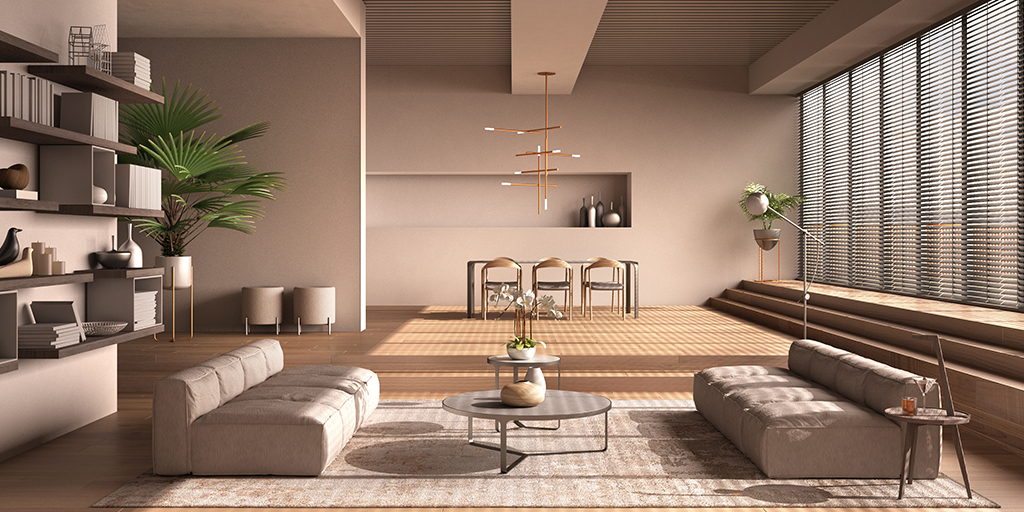When it comes to purchasing a property, there are many important factors to consider, such as location, price, and amenities. However, one crucial aspect that often gets overlooked is understanding the different types of area measurements associated with a property. These include Carpet Area, Built-up Area, and Super Built-up Area. In this blog, we will provide a brief explanation of each of these terms, why they are important for home buyers and real estate investors to understand, and the pros and cons of each type of area.
Carpet Area
Carpet Area is the actual usable area within the walls of the apartment or the space that can be covered by a carpet. This area does not include the thickness of the inner walls or common areas, such as the lobby, lift, or staircase. Carpet Area is the actual space that a person can use, and it is the most important factor to consider when deciding on the space required for living.
To calculate Carpet Area, one simply needs to measure the length and width of the room and multiply the two values. For instance, if a room measures 10 feet by 15 feet, the Carpet Area will be 150 square feet. Real estate builders in Chhattisgarh focus on all such aspects before making deals.
Carpet Area is essential for home buyers as it determines the space available for living. It helps in determining the amount of space required for furniture, appliances, and storage. This area measurement is also significant for developers as it impacts the number of units that can be constructed on a piece of land.
Built-up Area
Built-up Area is the Carpet Area plus the area occupied by the thickness of the inner and outer walls, ducts, and balconies. It includes the usable area, as well as the thickness of the walls and other spaces. This measurement includes common areas, such as the lobby, lift, and staircase, which are shared by all residents.
To calculate Built-up Area, one needs to add the Carpet Area to the area occupied by the thickness of the walls, balconies, and other such areas.
Built-up Area is important for home buyers as it determines the overall space available within an apartment, including the thickness of the walls and other areas. This area measurement is also significant for developers as it impacts the price of the property and the number of units that can be constructed on a piece of land.
Super Built-up Area
Super Built-up Area is the Built-up Area plus the proportionate area of the common areas, such as the lobby, lift, and staircase. It includes the area occupied by the Carpet Area, the thickness of the walls and other spaces, and the common areas, which are shared by all residents.
To calculate Super Built-up Area, one needs to add the Built-up Area to the proportionate area of the common areas.
Super Built-up Area is essential for home buyers as it determines the price of the property. This area measurement includes the share of common areas, which increases the overall price of the property. Developers use this measurement to determine the price of the property and to calculate maintenance charges, which are based on the Super Built-up Area.
Pros and Cons of Each Type of Area
Advantages and disadvantages of Carpet Area:
Advantages:
- Carpet Area is the most important area measurement as it determines the space available for living.
- It helps in determining the amount of space required for furniture, appliances, and storage.
Disadvantages:
- Carpet Area does not include the thickness of the inner and outer walls, ducts, and balconies, which reduces the overall space available for living.
Advantages and disadvantages of Built-up Areas:
Advantages:
- Built-up Area includes the Carpet Area as well as the space taken up by walls and other structural elements, giving a more accurate representation of the actual area available for use.
- It also includes the area occupied by common spaces, making it a more comprehensive measure of the overall space available.
Disadvantages:
- The inclusion of common spaces can sometimes lead to a higher Built-up Area, which may not be necessary for all buyers.
- The calculation of the Built-up Area can be subjective, as different builders may include different elements in their calculations.
Advantages and disadvantages of Super Built-up Area
Advantages:
- Super Built-up Area includes the Built-up Area as well as a share of common spaces like lobbies, staircases, lifts, and other amenities like swimming pools and gardens.
- It provides a more complete representation of the overall space available in a property, including both usable and shared spaces.
- It is helpful for comparing the amenities provided by different builders and projects.
Disadvantages:
- The inclusion of common spaces can sometimes lead to a higher Super Built-up Area, which may not be necessary for all buyers.
- The calculation of the Super Built-up Area can be subjective, as different builders may include different elements in their calculations.
Conclusion
Understanding Carpet Area, Built-up Area, and Super Built-up Area are essential for home buyers and real estate investors to make informed decisions about purchasing a property. While each type of area has its own advantages and disadvantages, it is important to consider the specific needs and preferences of the buyer before making a decision.
When making a decision about purchasing property from trusted developers in Chhattisgrarh, it is important to consider the specific needs and preferences of the buyer and to understand the advantages and disadvantages of each type of area. By doing so, home buyers and real estate investors can make informed decisions about purchasing property and ensure that they are getting the best value for their investment.

